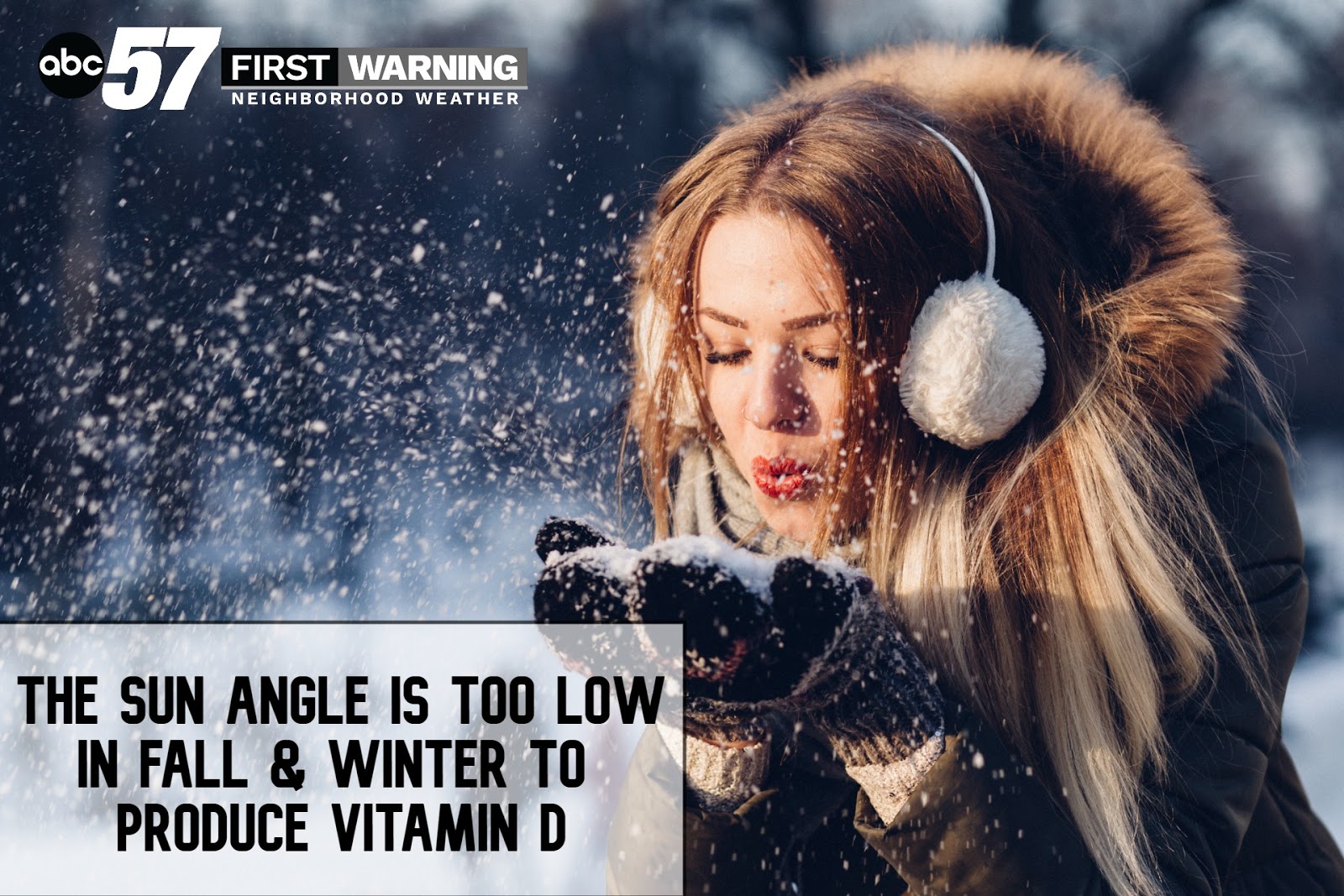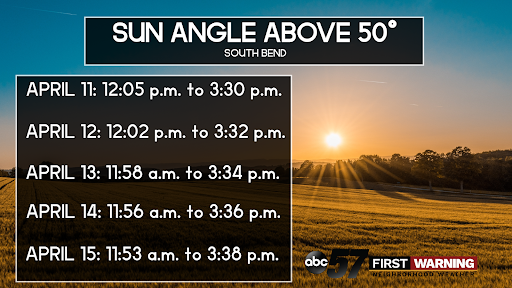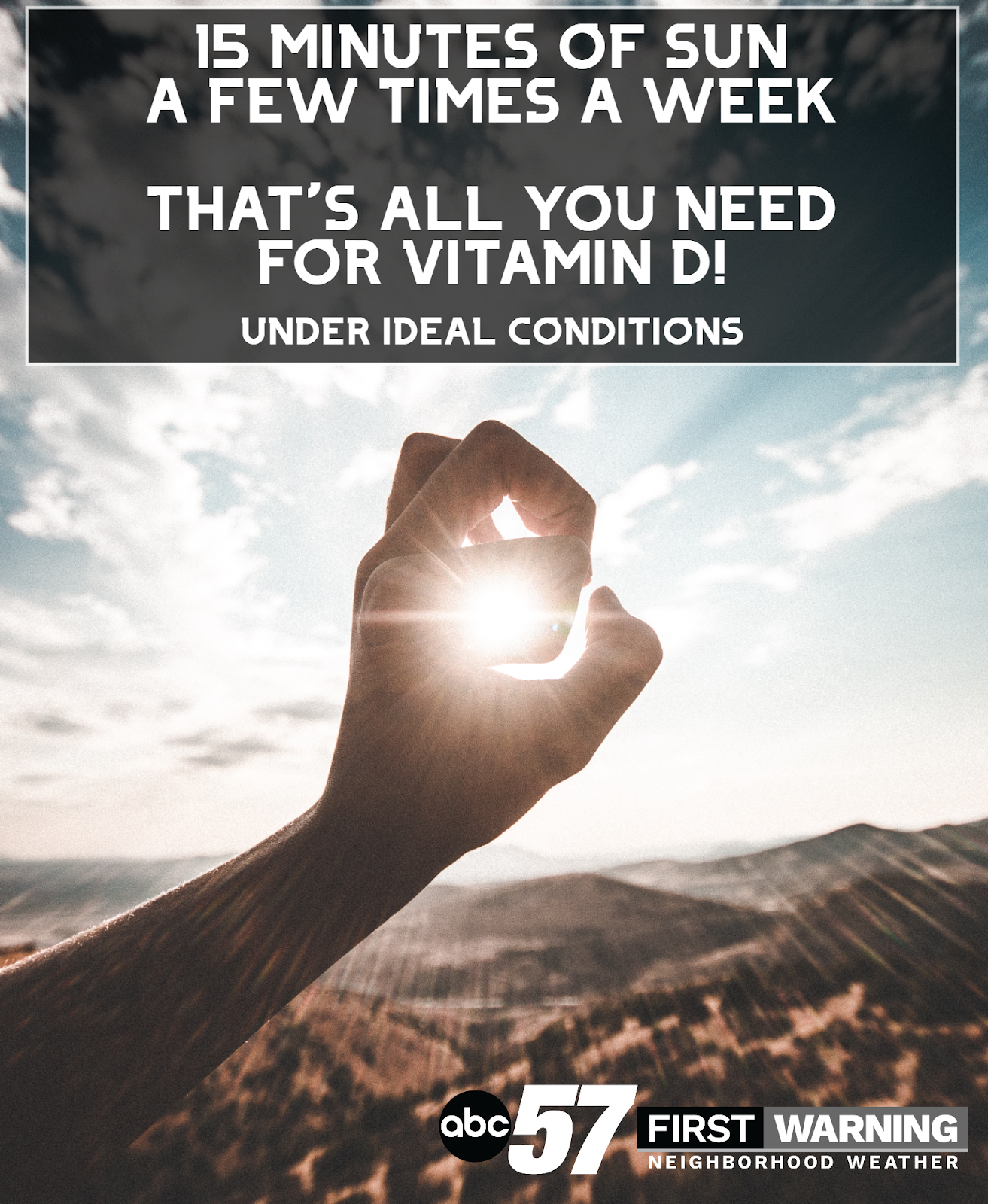Vitamin D from the sun starting to return across Michiana
Even though we’re almost halfway through meteorological Spring, it doesn’t look like Michiana is finished with chilly temperatures just yet.
But while the sunshine may not help us warm up anytime soon, it is starting to provide us with a vital vitamin once again: vitamin D.
Your body produces vitamin D naturally when it’s directly exposed to the sun’s UVB rays. It’s sometimes referred to as the “sunshine vitamin.” However, getting your daily dose of vitamin D may not be as simple as you think.
The primary challenge UVB rays have to overcome is the atmosphere. The lower the sun is in the sky, the more UVB rays are prevented from reaching the surface of the earth. Humans cannot produce their own vitamin D until the sun angle is higher than 50 degrees in the sky. So, the time of year, time of day, and location of where you live are major factors in this process.
Across Michiana, the start of April brings the sun angle above this threshold, if only for a short amount of time during the day. The closer the sun is to directly overhead (a sun angle of 90 degrees), the easier it is for your body to produce vitamin D. Across Michiana, the sun is higher in the sky during the summer months. As a result of our location, natural vitamin D production is not possible during most of autumn and winter.
This time of year, your best chance of catching the sun angle above 50 degrees begins around noon and lasts until 3:30 p.m. Here is a list of times when the sun will be above that threshold for the middle of April:
So, without using a solar calculator constantly, how do you know if the sun is more than 50 degrees above the horizon? For the answer, we have to take a page out of Punxsutawney Phil’s playbook and search for our shadow. If the shadow cast by your body is the same length or longer than your height, you will not produce vitamin D, even if your skin is exposed to direct sunlight.
UVB radiation can also be blocked by cloud cover, ozone, and pollution. It also can’t penetrate clothing or glass, so your body won’t produce any vitamin D on an afternoon drive.
Furthermore, your skin's production of vitamin D is influenced by many factors, like age, skin color, and sunscreen use.
Clearly, getting your body to produce any amount of vitamin D is a tough task! However, the health benefits of vitamin D outweigh the obstacles. While the “sunshine vitamin” is primarily connected to bone health, studies suggest that Vitamin D could help stave off certain cancers, cardiovascular disease, and depression.
Under ideal conditions, about 15 minutes of sunlight a few times a week is all you need to stimulate a healthy amount of vitamin D production. Keep in mind that UVB rays also can damage your skin, so limit the amount of direct sun exposure you do get.
Here’s to sunnier (and warmer) days ahead, Michiana!

















